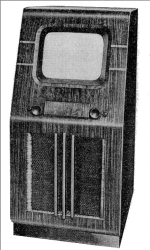From today’s perspective, vacuum tubes are pretty low tech. But for a while they were the pinnacle of high tech, and heavy research followed the promise shown by early vacuum tubes in transmission and computing. Indeed, as time progressed, tubes became very sophisticated and difficult to manufacture. After all, they were as ubiquitous as ICs are today, so it is hardly surprising that they got a lot of R&D.
Prior to 1938, for example, tubes were built as if they were light bulbs. As the demands on them grew more sophisticated, the traditional light bulb design wasn’t sufficient. For one, the wire leads’ parasitic inductance and capacitance would limit the use of the tube in high-frequency applications. Even the time it took electrons to get from one part of the tube to another was a bottleneck.
There were several attempts to speed tubes up, including RCA’s acorn tubes, lighthouse tubes, and Telefunken’s Stahlröhre designs. These generally tried to keep leads short and tubes small. The Philips company started attacking the problem in 1934 because they were anticipating demand for television receivers that would operate at higher frequencies.
Dr. Hans Jonker was the primary developer of the proposed solution and published his design in an internal technical note describing an all-glass tube that was easier to manufacture than other solutions. Now all they needed was an actual application. While they initially thought the killer app would be television, the E50 would end up helping the Allies win the war.
Television
In Britain, there was a single television transmitter at Alexandra Palace — the start of what would become the BBC. This was not only the first public television service but also the first fully electronic television system. Pye Ltd. — a company eventually bought by Philips — made receivers that were surprisingly successful. The sound was at 41.5 Mhz and the visual was at 45 MHz — high frequencies for those days.
Spurred by the demand, Pye decided that a set with more range would create a broader market for receivers. The problem was finding a tube that could handle the 45 MHz frequency in their tuned radio frequency (TRF) design.
Pye wrote out the specifications for what they needed, but couldn’t get them made reliably and cheaply. They turned to Philips who took Jonker’s ideas and added some items needed for this application, producing the EF50 — a pentode. The resulting TV set (see page 199) had a range of about five times the older sets.
Construction
Old tubes used a difficult process called pinching to seal the end of a glass tube with the leads running through it. The pinch formed an inverted V shape where the bakelite base of the tube fit the wide part of the V and the wires within entered the tube through the point of the V.
This had several problems. As more wires had to pass through the pinch, they had to get closer together. That increased stray capacitance. Worse, the distance from the bottom of the …read more
Source:: Hackaday

